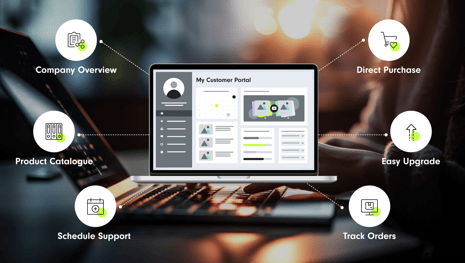If you want to sell goods, the online store is the first contact point for your customers. The store not only sells your products, but also serves as a flagship for your company.
Before you get started, you need a good and competitive e-commerce strategy, and you should think carefully about how you can achieve your goals in an optimal way. We will show you what you need to consider in order to guarantee not only customer’s satisfaction, but also high sales figures.
Set goals and define the target group
An initial SWOT analysis serves as a benchmark for all your actions and creates the basis for the target definition of your e-commerce strategy. It is also useful to take a look at your competition. What do your competitors do well, what do they do poorly and what can you learn from this? How do you address the target group and which channels do you use for this?
Identify what is your target audience and define actions that need to be taken in order to reach this specific group. Unique characteristics such as age, origin, gender, education, income and much more are important points. A few helpful questions:
-
How old is the person and is he or she more likely to be male or female?
-
What is the disposable income of this person?
-
What shopping habits does this person have?
-
On which social media channels is this person the most active?
Mobile customers as prime target
Around 45 percent of all customers access online stores via a mobile device – and the trend is rising. While the laptop used to be the number one medium for online shopping, it is now replaced by the smartphone. Therefore, when it comes to your e-commerce strategy, remember that around half of your customers never see the desktop version of your store. Hence think mainly of the mobile users. The store should also function smoothly on the move, be user-friendly and have attractive design. Large systems, such as shopware, offer a preset Responsive Design for each store.
But beware: here, too, take a look at your goals and target group. If your customers are over 60 or you sell in the B2B sector, the Desktop First approach could still be worthwhile for your store.
Find the right store design: E-Commerce with system
Before you think “we’ve always done it this way”, question your existing system landscape and data structures. There are many different store systems on the market, and some are better suited for your goals and requirements than others.
Educate yourself well in advance about all advantages and disadvantages of particular systems. A few points to consider:
-
Which functions of my online store are a must?
-
Which data must be exchanged between the merchandise management and the store system?
-
Is there some customer data that needs to be migrated from an old store system?
-
Include the costs and possible problems of a system migration in your relaunch plan.
Simplify the payment process
Amazon, Zalando, eBay offer ordering and payment within a few clicks, very straightforward. Modern day consumers are spoiled. You also compete for the attention of those customers and therefore your payment and logistic processes must always work flawlessly. A choice of various payment methods is important to attract as many customers as possible and not to lose to the competition in the order process on the way to the purchase.
Have a look, which combinations are reasonable and common on the market. Find out which payment methods your customers want and provide them. Include trust elements such as seals of approval in your order process. This has been proven to increase the willingness of new customers to pay in advance.
Design and usability should be perfect
People are convenient – and so are your customers. Keep the design subtle and clean, avoid long continuous texts and a complicated checkout process. If you don’t already have one, primarily develop your CI, CD and brand, before you start developing your store. Pay attention to an engaging, modern design and be aware about trends that really grab attention of your customers.
Voice Search, Virtual Reality or Artificial Intelligence: Incorporate current technology trends and innovations into the store strategy. Are social shopping functions or 3D animations also available? Remember however that gimmicks should never be used as an end in themselves. Only if it makes sense for the customer, it makes sense for your store.

The product information must be accurate
In terms of value, data is the new oil. Consequently, your product data is your main selling point. Use it correctly and meaningfully. Make sure you present your products and services in an attractive way and provide a detailed description of your offer. This not only makes your online store more trustworthy, but also sparks positive emotions in your customers, and reduces the number of returns.
The physical retail has the great advantage that customers can always touch products, look at them from different perspectives and have a conversation with the sales staff. In e-commerce, these PoS advantages must be replaced by as much product information as possible. Size, material, weight, color, functions and other important information can be crucial when it comes to the customer’s buying decision.
Product Information Management (PIM) helps you to efficiently manage, use and permanently keep the complete range of product data most current. The big advantage is the central management and playout across all channels. The maintenance effort for your marketing activities is reduced enormously with a PIM.
Testing, testing, testing
It may seem trivial, but it is not. Before you bring new features, designs or even your whole store live, you should perform an intensive round of testing. Even small bugs can have a huge impact. Few important issues:
-
Do all redirections work?
-
Is the design satisfactory?
-
Can customers easily navigate the website?
-
Can they access all the information they need?
etc.
Go to your store and think like a customer. Check all functions thoroughly. Even if the test phase consumes a lot of time: This time is valuable and should not be disregarded under any circumstances.
A Customer Journey and Touchpoint Analysis serves as the basis for all strategic ventures you plan. As lead agency for digital transformation, we analyze your existing store and find exactly the right approach for more sales, more leads and more customers.



